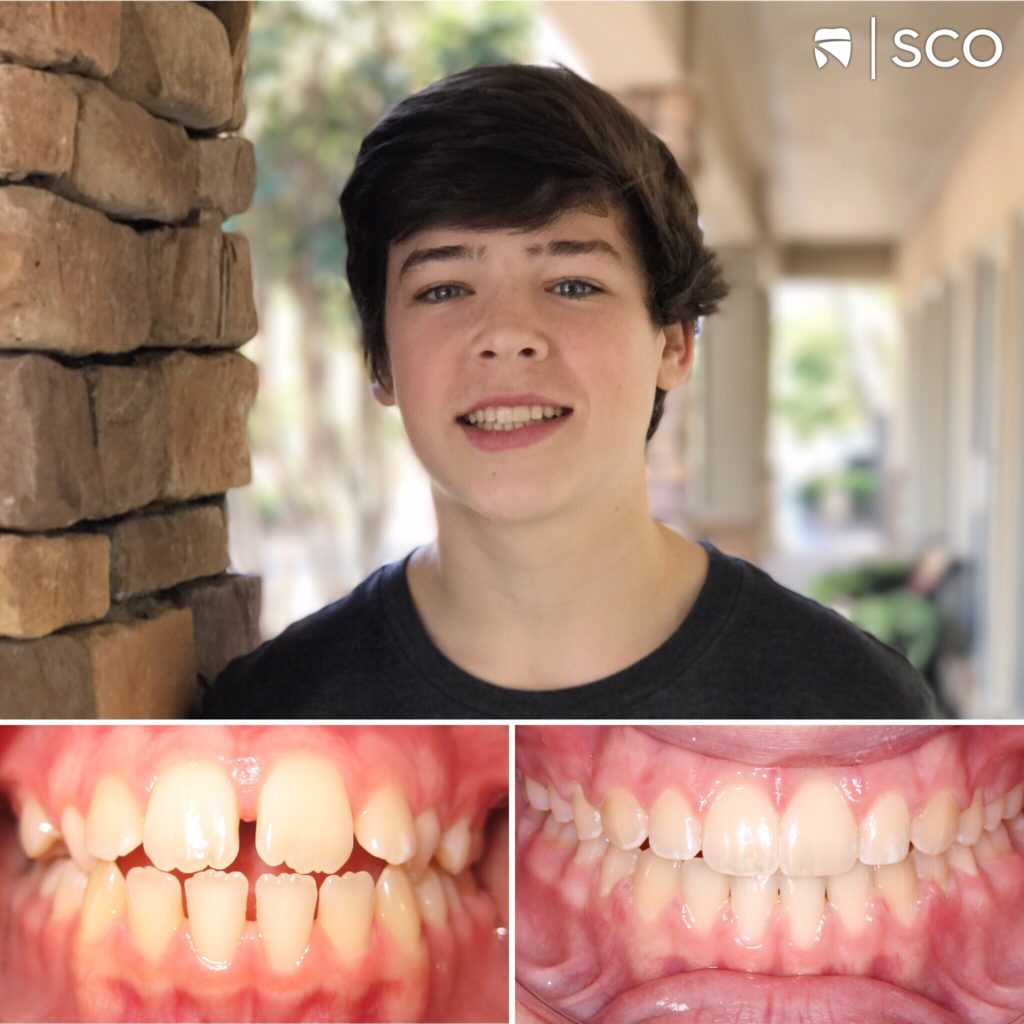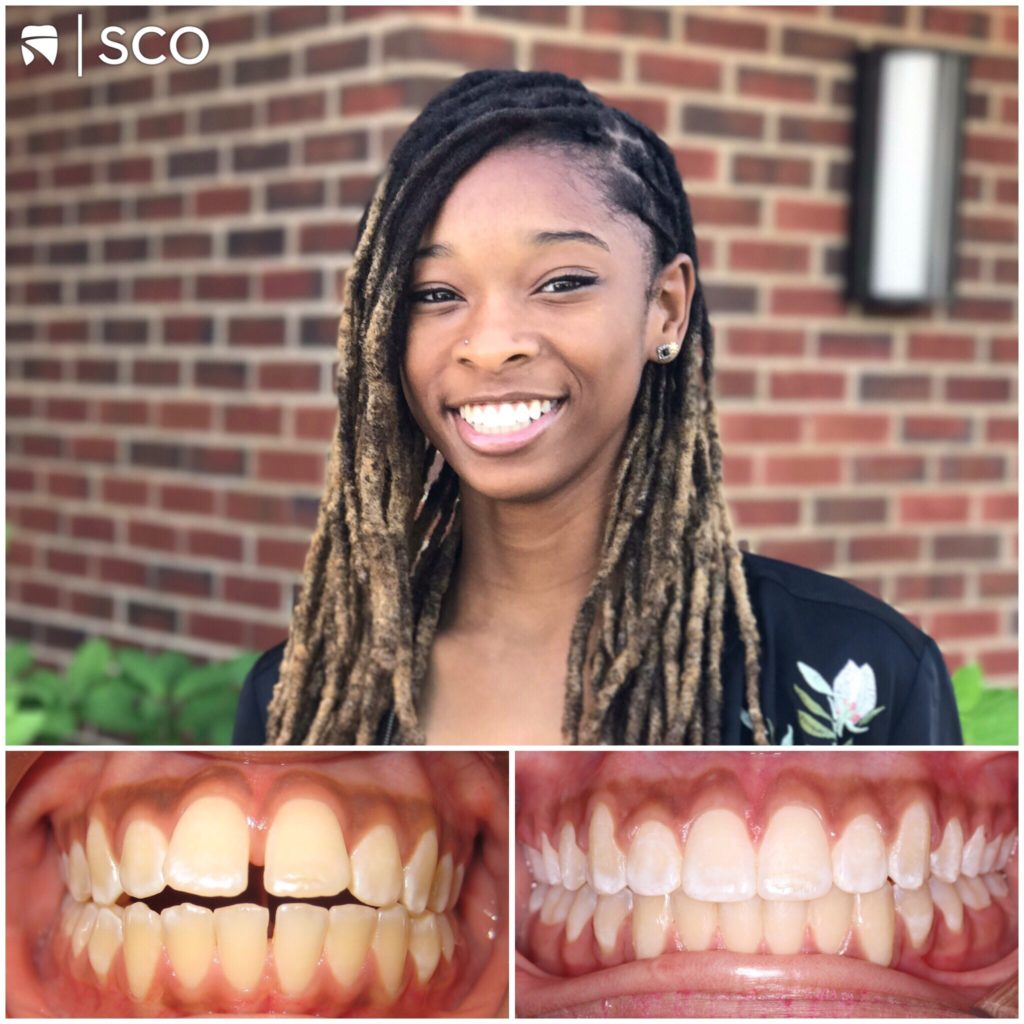When it comes to creating the perfect smile, traditional braces are tough to beat. This appliance has been a mainstay of orthodontics for hundreds of years and has a proven track record of successfully treating a wide range of issues. Braces not only improve the cosmetic appearance of your smile, but can also correct many different problems with bite alignment. This is important because when your teeth are in the wrong position, it can affect how you chew, speak, and even sleep! Malocclusions also contribute to abnormal wear and tear on the teeth, which can cause its own set of complications. And that is why we taking a look at what orthodontic issues braces can treat!
Here at Saddle Creek Orthodontics, we use braces to apply constant pressure to the teeth that gently shifts them into the correct positions over time. Advanced technology allows us to apply the brackets with precision and make minute adjustments to the archwire for exceptional results in the shortest amount of time possible. Keep reading below as we take a closer look at some of the most common orthodontic issues braces can help treat!
Misalignment
When there is a misalignment present, the upper and lower teeth aren’t able to meet comfortably. The pressure that comes with this kind of abnormal bite can wear the tooth enamel down, which may lead to chipping and thinning. An experienced orthodontist like Dr. Fagala can use braces to move the upper jaw forward or backward into alignment, allowing the teeth to meet and creating a more functional bite. In more severe cases, jaw surgery may be required along with braces to achieve the best results.
Crowded or crooked teeth
Sometimes a patient will have too many teeth for their dental ridge to accommodate. In other cases, the teeth may fit but are crooked or twisted. Both issues can make it difficult to brush and floss effectively, giving food particles and bacteria a chance to build up, particularly along the gum line. Over time, this can cause plaque and tartar to accumulate, increasing the risk of developing gum disease.
If overcrowding is the problem, we can remove one or more teeth to open up space in the mouth. We’ll then use braces to straighten out the remaining teeth and move them into more optimal positions.
Excess spacing
Excess spacing, also known as diastema, is one of the most common reasons for a patient to seek treatment. A gap between the two front teeth is often caused by an overgrowth of the gum tissue that borders these teeth, but diastema can occur for any number of reasons. This includes teeth that don’t grow in properly, the size of the jaw, and incorrect swallowing reflexes. We can use braces to easily close any gaps in the teeth, improving the overall appearance of the patient’s smile.
Overbite
An overbite happens when the upper teeth sit too far forward over the lower teeth. When a deep overbite is present, the lower teeth recede so far behind the upper teeth that they bite into the roof of the mouth. This is detrimental to the teeth and the health of the jaw joints, and may also impact the shape and appearance of the face.
For mild to moderate cases of overbite, we can use braces to shift the upper teeth back towards the lower teeth. More severe cases may be treated with orthodontics alone or may require orthodontics and restorative dentistry together. Correcting an overbite will improve the functionality of the teeth and the appearance of the smile.
Underbite
An underbite occurs when the bottom teeth protrude in front of the upper teeth. This type of bite misalignment can cause pain at the jaw joint, an unbalanced facial appearance, and uneven wear and tear on the teeth. Using braces, we can move the upper or lower teeth on their own, or both the upper and lower teeth together. In severe cases, jaw surgery may be required in conjunction with braces to correct the underbite. Treatment will help to relieve any pain and discomfort associated with the underbite, and can also make it easier to smile, eat, and even breathe!
Crossbite
A crossbite occurs when the lower teeth cover one or more of the upper teeth when you bite down. This irregular contact can happen in several places in the mouth and may cause headaches and jaw pain. It can also increase the chances of tooth decay and abnormal wear of the teeth. More serious cases of crossbite can lead to tooth fractures, receding gums, and asymmetrical growth of the jaw in children.
Braces can be very effective at treating various forms of crossbite. Along with aligning the upper and lower teeth, braces can help achieve some degree of skeletal realignment when they’re used in conjunction with expanders, elastics, and other orthodontic appliances.
Open bite
With an open bite, the upper and lower rows of the front teeth don’t touch or close when smiling or chewing. Many open bites come from extended thumb sucking or pacifier use in childhood, which can cause the teeth to grow into a noticeably rounded formation. Whatever the cause, an open bite can cause difficulty in biting down, lisps, and other speech issues.
We’ll often open bites with a combination of braces and an orthodontic appliance known as a “crib.” This device prevents the tongue from putting pressure against the anterior teeth when swallowing, thus training it to swallow correctly. Once treatment is complete, the bite will be aligned, allowing the patient to smile, eat, and speak with ease.
Excess overjet
When an excess overjet is present, the top front teeth will protrude far beyond the bottom front teeth, resulting in a condition that is often referred to as “buck teeth.” An overjet can be hereditary in nature or may be caused by external factors such as thumb sucking, prolonged use of a pacifier or bottle, or excessive tongue thrusting. It can lead to speech issues, difficulty biting and chewing, an irregular facial appearance, and an inability to completely close the lips. An expert orthodontist like Dr. Fagala can use braces to treat overjets with excellent results, diminishing the distance between the top and bottom teeth to close the excessive overjet.
TMD
Temporomandibular disorder (TMD) is a condition that affects the temporomandibular joint (TMJ) that connects the jaw and the skull. In some cases, misalignment between the upper and lower teeth where the teeth meet can put pressure on the TMJ, leading to a wide range of symptoms including pain or tenderness in the face, jaw joint, or neck. Patients may also experience pain in or around the ear when chewing or speaking and difficulty opening the mouth wide. Braces can correctly align the upper and lower teeth to prevent irregular pressure on the temporomandibular joint.
Find your healthiest smile with braces by Saddle Creek Orthodontics
As you can see, braces can solve a wide variety of orthodontic issues! Saddle Creek Orthodontics is proud to help Mid-South families achieve healthy smiles using customized treatment plans, cutting-edge technology, and innovative techniques. If you’d like to learn more about how braces can transform your smile, get in touch today to schedule a FREE consultation in our Germantown or Collierville office.


